This history of KBPK 90.1 FM was researched and written by Diana (Kirchen) Kelly, Ph.D., on Feb. 7, 2022, to commemorate the 50th anniversary of the radio station. Kelly is a former KBPK student (1975-76) and former full-time radio faculty member (1980-1993).
Introduction
This brief history of the start of KBPK-FM is to commemorate the 50th anniversary of the radio station broadcasting at Fullerton College. KBPK’s first broadcast from Fullerton College was on Feb. 7, 1972. But the history of the station starts before this date. This story begins with some changes in FCC rules for non-commercial educational stations, some very dedicated radio people who decided to start a new radio station in a junior high school in Buena Park, and the partnership between Fullerton College and the Buena Park School District to share the responsibilities for the station. The story continues with the commitment of many staff and students over the years to use KBPK as an effective training ground for future broadcasters.
FCC Regulations for Non-Commercial Educational FM radio stations
In 1940, the FCC set aside five channels for FM educational radio stations, and in 1945 this allocation was expanded to 20 channels which still exist today: 88 – 92 MHz. A few years later, in 1948 the FCC authorized 10-watt operation for FM educational stations and started receiving applications. By 1950 a total of 48 non-commercial educational radio stations were in operation across the United States. Most of these were operated by universities. In 1951 the FCC authorized remote control operation of FM educational radio stations – an essential step that laid the groundwork for KBPK.
In 1967 a new law enabled the U.S. Department of Health, Education, and Welfare (HEW) to make matching federal grants to build educational radio stations. This made it possible for educational institutions to have sufficient funding to start educational radio stations.
The Radio Program at Fullerton Junior College Before KBPK
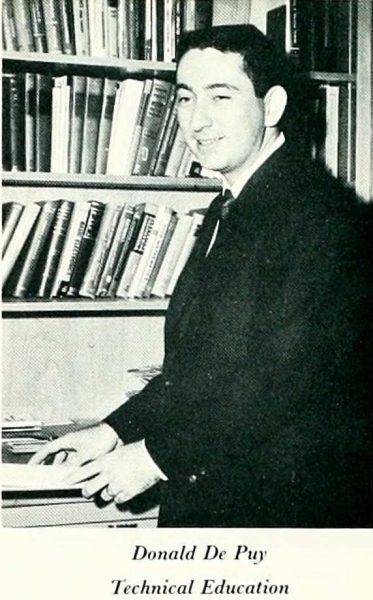
Fullerton Junior College (FJC) had a few radio-related classes before the start of KBPK. A 1953 article in the Torch newspaper (as it was called at that time) featured Roland Hiltscher winning a regional competition for radio news broadcasting, under the direction of FJC Speech & Forensics Coach Denver Garner.
In the Fall semester of 1961, Don DePuy started teaching Electronics (including radio electronics) in the FJC Technical Education Department.
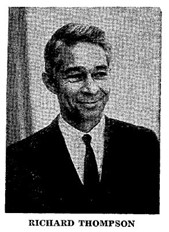
Richard “Dick” Thompson started teaching at FJC full-time in the Theater Department in the Fall semester of 1964, teaching radio and theater classes. He had a background in radio and theater and wrote and produced many radio dramas. When Dick was interviewed by the FJC Hornet newspaper in 1964, he said that he sees a brighter future for radio broadcasting at FJC, and said “ . . . when the new Drama Building is completed there will be much more opportunity in the broadcasting area.” The plans for the new theater building included radio studio facilities. After some construction delays, the new theater building opened for classes in the Spring semester of 1966.
In the absence of an on-air radio station, in 1966 Dick Thompson had his radio students produce a series of 30-minute radio programs called “Collage.” These recorded programs were aired on KEZY-AM on Sunday mornings and highlighted different cultural and arts programs at Fullerton J.C. In the spring semester of 1966, Dick Thompson’s radio students produced 33 programs, and the series continued for the next several years.
Meanwhile, in 1966 the student government of Fullerton Junior College also advocated for the start of a radio station at the college. When they learned that California State College, Fullerton (a public 4-year institution, later “California State University, Fullerton”) had applied for a radio station license, the student government recommended going together with California State College to get a radio station that would be shared between the two colleges. But this never happened, and California State College never received a license for a radio station.
Dick Thompson really wanted to start a radio station at Fullerton College to give his radio students on-air experience. So between 1968 and 1972 he applied twice to the FCC for an educational radio station license, but his applications were turned down.
The Beginning of KBPK at Calder Junior High School in Buena Park
In 1969 Jack Townsend, an instructor at Calder Junior High School in Buena Park, also applied for a radio station license for the Buena Park School District. In an LA Times article (Nov. 11, 1968) Jack said “We started an electronics program during the last semester of last year, and we started thinking how great it would be if the kids had an opportunity to see some application of the things they’re learning.” At that time the junior high school had a 70-watt Amateur (“Ham”) radio transmitter for the radio students. Jack Townsend had a background in radio engineering and held a First Class FCC License.
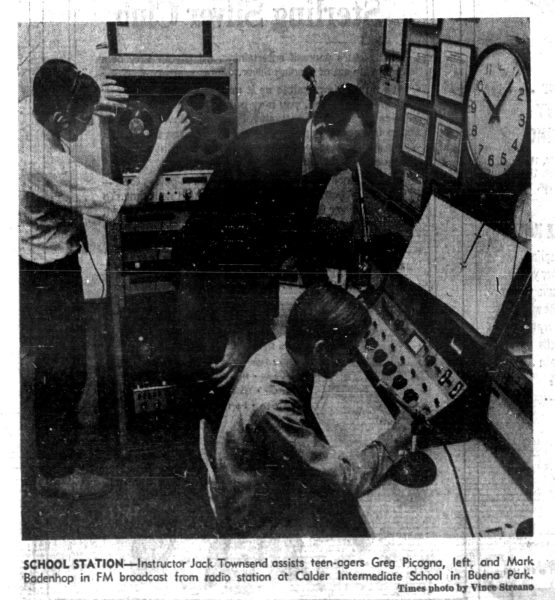
Jack’s license application was accepted, and by the end of 1969 a construction permit for a 10-watt FM station at 90.1 FM was approved by the FCC. The transmitter was located on property owned by the Buena Park School District, near the corner of Knott and Orangethorpe avenues. In March of 1970, the call letters of “KBPK” (for “Buena Park”) were assigned by the FCC, then in June of 1970 the final license application for KBPK was submitted to the FCC. The FCC approved the application for KBPK to begin broadcasting from Calder Junior High School on Sept. 30, 1970. By 1970 there were 440 non-commercial educational radio stations in operation in the U.S., but KPBK was the only one at that time that was operated by a junior high school. Jack Townsend taught the eighth grade radio students to make on-air announcements and operate the equipment to broadcast pre-taped programs. All of the radio programs were educational, intended to be used by teachers and their students in local elementary schools.
By the end of 1971, Jack Townsend worked with Dick Thompson and Don DePuy to start sharing air time on KBPK between Calder Junior High School and Fullerton Junior College. At that time Calder Junior High School radio students were broadcasting live Monday through Friday from 11:30 a.m. to 3:00 p.m. It was agreed that FJC students would broadcast from 9 a.m. to 11 a.m. The hours shifted slightly over the years the station was shared, and by the mid 1970s, Fullerton College students broadcast from 8 a.m. to 11 a.m., then Calder Junior High School students broadcast from 11 a.m. to 3 p.m., and Fullerton College broadcast again from 3 to 6 p.m. In order for this sharing to take place, new equipment needed to be installed for remote broadcasting at Fullerton College, and the remote broadcasting had to be approved by the FCC and the Community College District Board. All of this happened over a short period of time, and KBPK was ready to start broadcasting at Fullerton Junior College.
First KBPK Broadcast from Fullerton Junior College – February 7, 1972
KBPK started broadcasting remotely at Fullerton Junior College on Monday, Feb. 7, 1972. The next day, the following article by Jack Boettner appeared in the Los Angeles Times about the broadcast, complete with a photograph of the first student announcer at the controls, James K. Ward.

It was 9 a.m. Monday [Feb. 7, 1972] and James K. Ward, a student, moved a boom-type microphone in front of his face. A split second later the first live radio program in Fullerton Junior College’s history was on the air.
“Good morning, this is KBPK, Buena Park, operating on an assigned frequency of 90.1 megacycles with 10 watts of power by authority of the Federal Communications Commission (FCC), broadcasting by remote control from the Fullerton Junior College campus.”
Ward then flipped a switch and the station’s first musical offering was broadcast, featuring a recording of Sergio Mendez and Brazil ’66 “With a Little Help from My Friends.”
In a separate studio, student Arlene Cashen was studying her script for a 9:45 a.m. presentation of “Women’s World,” a 15-minute program designed for teen-age girls and young women. It can be heard on Mondays and Wednesdays in the community-oriented format.
One-minute news and sports segments are scheduled four times a day, four times an hour. There will be no commercials. Music will be selected for broad audience appeal.
The first morning of broadcasting went smoothly with the exception of one tape recording failure. A taped community service program originally scheduled for today [Tues. Feb. 8, 1972] was hastily switched to Monday [Feb. 7, 1972.]
The broadcast debut climaxed more than four years of planning “and a great deal of frustration,” according to Richard W. “Dick” Thompson, radio program instructor. It was made possible through the cooperation of Buena Park Elementary School District officials.
Thompson said the college had sought a license to operate its own 10-watt station. However, the FCC denied the request on the basis that the Fullerton program might interfere with another station already operating in the area.
Subsequently, the college worked out an agreement with the Buena Park School District to use the facilities at the Calder School radio station. Basically, the arrangement calls for the college to deliver its programs to the Calder School station via leased telephone cable for transmitting. Thompson believes that the two-district agreement is unique in the field of educational broadcasting.
Thompson said FCC approval is not necessary for the current operation of the station. However, the campus station will need FCC approval before it can handle all of its remote control operations.
Programming from the college is scheduled from 9 a.m. to 11 a.m. Monday through Friday, at the outset. Thompson said he hopes that the programming can be expanded to an 8 a.m. to 11 a.m. time span next Fall [Fall semester 1972].
The station’s signal reaches into La Habra in the north, Long Beach on the west, Santa Ana on the south, and the Cal State Fullerton area on the east.
Students in the Radio Workshop of the Theater Arts Department prepare broadcast material under staff supervision. Technical advice is provided by instructors James W. Duke and Carlisle G. Tanner.
The cost of the remote control will run about $2,000. Telephone cable costs will be an estimated $130 to $145 a month. Additionally, the North Orange County Community College District will have to pay an undetermined maintenance tab.
KBPK Power increase
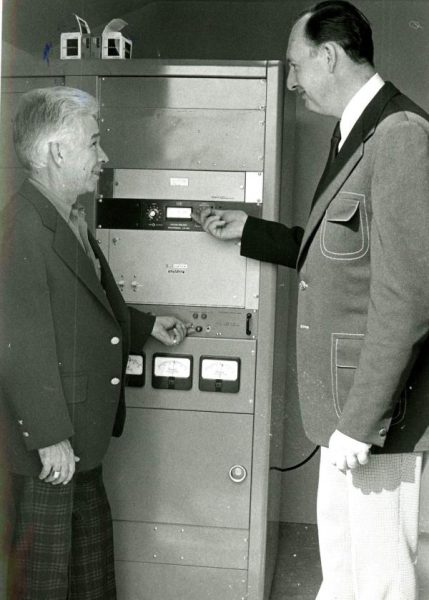
In 1975 KBPK received FCC authorization for a Construction Permit and new transmitter to increase the power from 10 watts to 19 watts. This increased the coverage area and improved the signal quality in the existing coverage area. The increase in power took effect on Nov. 11, 1975. Another power increase to 1500 watts was requested in 1979 but was not approved by the FCC. This change would have required a new directional antenna and a frequency change.
Growth of the Radio instructional program at Fullerton College
The hours of broadcasting on KBPK expanded in the Fall semester of 1972 to include afternoons from 3 p.m. to 6 p.m. in addition to the existing morning broadcast hours of 8 a.m. to 11 a.m. This meant adding another “Radio Workshop” class for the afternoons. In the summer of 1974, KBPK broadcast from 9 a.m. to 3:30 p.m. Monday through Friday for the first time.
KBPK programming included regular 30- or 45-minute DJ shifts for the “Radio Workshop” students as well as two pre-recorded programs produced by radio production students. “Kiddie Korner” was a 15-minute program for children which included storytelling, poetry reading, and dramatics. “Spectrum” was a 15-minute program which included interviews of people in the college and local community.
With the new KBPK broadcasting responsibilities, the college needed to grow the program by adding more students, more radio classes, and more radio instructors. In 1972, Dick Thompson was the only full-time radio instructor. Don DePuy, a full-time instructor in electronics, started also teaching radio classes in 1972. Others taught part-time in the radio program.
In the spring semester of 1975, a third full-time radio instructor was added, Paul Kelly. Paul brought current broadcast experience to the program and started a Radio News class. Students in the news class learned how to write and present newscasts, allowing KPBK to provide news broadcasts on the hour. By 1980, KBPK was also providing a 30-minute newscast “Noon News” Monday – Friday and a one-hour news magazine program “Weekend,” originated by Student News Director Ed Berger, which aired on Saturdays. Paul Kelly also started live sports broadcasting in 1976, with students doing play-by-play announcing for Fullerton College basketball and baseball games.
In the Fall of 1976, Darrell Kitchell started teaching full-time in both the radio and television programs. He also brought current broadcast experience to the program, also teaching broadcast writing and scriptwriting classes for radio and television. (He retired from Fullerton College in June 2008.)
By 1977, the Fullerton College radio program was providing 75 hours of programming per week on KBPK, while 20 additional hours of programming were provided by the radio students at Calder Junior High School.
In the fall semester of 1978, KBPK started broadcasting full-time from Fullerton College, Monday through Friday from 8 a.m. to 10 p.m. and weekends from 10 a.m. to 10 p.m. This was the era of Prop 13, and the Buena Park School District no longer had sufficient funding to support the operation of KBPK. So Calder Junior High School stopped broadcasting, and Fullerton College took over KBPK full time. With these expanded hours, more students were needed for on-air shifts, and more faculty supervision was needed. From 1978 to early fall semester of 1981, in addition to teaching radio classes, Paul Kelly was also the faculty adviser for KBPK.
In November of 1981, experienced radio broadcaster Jim Bain joined the radio program at Fullerton College as the full-time supervisor of KBPK and the adviser for the radio workshop students. He held this role until his retirement in 1999. (Jim Bain passed away in June 2020).
In the spring of 1980, long-time radio instructor Dick Thompson announced his retirement. He retired in June 1980 and moved to New Mexico where he passed away in 1997.
Former KBPK student Diana Kirchen was selected to become the new full-time radio instructor, starting in the fall semester of 1980. She brought current on-air experience as well as experience in radio production and programming. Diana taught full-time in the radio program until she left Fullerton College in December 1993 to take a position as associate dean at Cuyamaca College in San Diego County.
Ed Berger, another former KBPK student and local broadcaster, started teaching radio classes part time after Diana’s departure, and became the full-time radio instructor in fall of 1994. He also supervised KBPK until his passing in 2003.
Ed Ford, who was also a former KBPK student, has provided essential technical support and supervision for KBPK from about 1978 to the present. He has been instrumental in keeping the station license up to date, providing essential support for the radio studios and sports broadcasts, and sharing his expertise with radio students over many years.
KBPK and the Radio Program as part of the Communications Department/Division
In November of 1975, Fullerton College President Dr. John W. Casey announced the formation of a new “Communications Department.” Don DePuy was named the chair of this new department, which included radio and television (formerly in the theater department), journalism (formerly in the English department) and photography (formerly in the art department). Don was the department chair until spring of 1985, and he continued teaching radio electronics and engineering classes at Fullerton College until his retirement in 1997. In 2000 Don DePuy came back to KBPK as the engineer and station supervisor until his passing in 2002.
In Fall 1985, Paul Kelly was named chair of the Communications Division, and later Dean of Communications, a position he held until December 1992 when he left Fullerton College to become Dean of Vocational Technology at Palomar College in San Diego County. The former “Communications Division” became the “Communications Department” in 1992, as part of the Technology Education Division. Marie Perez, full-time television instructor, took over as coordinator of the Communications Department in 1993 and held this leadership role until her retirement in June 2017.
Radio Studios and Facilities
Before the theater building, the radio studios were in the electronics area of the technical education building, in room 712. In 1966, the classes moved to the radio studio in the newly completed theater building. This consisted of a raised studio with glass walls, an equipment room, an office for the faculty in radio (Dick Thompson), a record library, a classroom and a production room for interviews and other production work. A news area was later added to the classroom, with a UPI news wire machine.
When KBPK started broadcasting from Fullerton College in 1972, radio classes were still held in the studio, but they had to be scheduled from 11 a.m. to 3 p.m. when the studio was not broadcasting.
In January of 1975, when more radio classes were added and Paul Kelly started teaching, a new radio classroom was needed. This studio was created in room 1121, upstairs in the music building. Don DePuy built the new board with remote buttons for the two turntables and cart machines. Paul Kelly and Don DePuy installed the equipment and got this new classroom studio ready for the first classes in spring semester 1975. This room had a glassed-in studio and a small classroom with speakers to hear the practice radio programs of the student on the control board. The classroom area held 12 students and was used for teaching the beginning Radio Studio Operations classes and the Radio/TV Announcing class. The other radio classes were still held in the radio studio in the theater building. When KBPK started broadcasting full-time from the Fullerton College studios in 1978, most radio classes were moved to room 1121 in the music building, except the Radio Production, Radio News and Radio Workshop classes which were still held in the radio classroom area near the on-air studio.
By the mid-1980s, the radio program had outgrown these facilities because of the number of classes being offered. A new plan was developed for upgraded facilities in the KBPK radio station area. This included lowering the floor of the on-air studio for wheelchair accessibility, building three new radio practice rooms in the classroom area, and building two production rooms with new equipment. Work on the new facilities cost $50,000 and was completed in the middle of the fall 1987 semester.
These new facilities provided much more space for students to practice their radio skills outside of class time and made it possible for all radio program facilities and students to gather in one place.
Over the years, the studio equipment has been updated to get rid of old boards, cart machines and reel-to-reel tape machines and replace them with newer boards and computer equipment.
KBPK’s studios were updated several times over the years, most recently in 2018.
In 2022 there is a plan to move the radio studios back to the technical education building (700) where the radio program started in the 1960s.
Radio Classes at Fullerton College
In the early days of the radio program, the following classes were offered: Intro to Broadcasting, Radio Studio Operations, Announcing, and the Radio Workshop (KBPK). Also, in the electronics department, Don DePuy taught several classes to prepare radio students for FCC Licensing Exams. The class to prepare students for the Third Radiotelephone License with Broadcast Endorsement became a regular part of the radio curriculum in the mid-1970s.
In the spring of 1975 when Paul Kelly started teaching, more radio classes were offered: Radio Production (producing Kiddie Korner and Spectrum programs), Radio News, and Radio Sports.
In the 1980s, Diana Kirchen started offering additional classes for advanced students in Radio Programming and Radio Interviewing.
To be eligible for the “Radio Workshop” class to be on the air at KBPK, students had to successfully complete three classes: Intro to Broadcasting, Studio Operations, and Announcing.
KBPK Live Remote Broadcasts
Before the era of microwave transmissions and cell phones, the only way to do remote broadcasts outside the radio studio was with telephone lines or direct lines.
Remote broadcasts on-location became a regular part of KBPK in 1976, when Paul Kelly and Don DePuy set up the direct lines from KBPK to the gym and baseball fields for live sports broadcasts. Sports broadcasting grew over the years to include local high school games and other colleges, and later there was a sports broadcasting class.
In March 1976, KBPK students did live remote broadcasting from the Anaheim Convention Center. This was for a big “Career Day” event for high school students on March 17-19, 1976. Don DePuy and Paul Kelly set up the radio studio equipment and telephone line for the remote broadcast, and the KBPK students ran their music programs from the Convention Center for three days. High School students interested in radio as a career gathered around the studio to see how the studio worked and what the radio students were doing. The Fullerton College television program was also on display in the Convention Center, with the mobile van and a full studio set-up.
“A Night in Fullerton” was an annual cultural event in Fullerton that took place every year on the last Friday in April. The event was started in 1964 by Florence “Flossie” Arnold and always included many concerts, art exhibits, dramatic presentations, and other cultural events in many locations throughout Fullerton. From the mid-1970s, KBPK students were involved with “Night in Fullerton” as announcers at various venues. But in 1980, KBPK started doing remote broadcasts of “Night in Fullerton” from Villa del Sol on Harbor Blvd, downtown Fullerton.
Don DePuy and Paul Kelly made arrangements for the broadcast, including the location of the broadcast table and equipment upstairs at Villa del Sol, the use of a phone line to get the signal back to the KBPK studios, and the coordination of the KBPK students covering the event. KBPK students went out to various venues using portable tape recorders, then brought the tapes back to the station to insert them into the program. “Anchor” students would keep the commentary going at the Villa del Sol headquarters.
And other students were back at the station. Some years there were also live broadcasts from the First Christian Church, one of the performance venues. In 1982, Jim Bain took over responsibility for KBPK’s broadcast of “Night in Fullerton” and continued these broadcasts for several more years.
KBPK Radio Students
The students have always been the most important part of KBPK and the radio program at Fullerton College. Many KBPK radio students have had great success in their careers in broadcasting and in other fields, because of their hard work and dedication.
When I was a student in the radio program at Fullerton College (1975-76) the radio students jumped at the chance to do extra radio work, such as participating in remote broadcasts or working extra air shifts. We all wanted to do extra work to get more radio experience so we’d be more marketable when we looked for jobs in radio.
Later, when I was a full-time faculty member in the Fullerton College radio program (1980-1993), our radio students put in far more time and energy in extra radio work than they were required to do for classes. They were highly motivated, and as a result they have been highly successful in their careers in radio and in many other careers in which they have used what they learned in the radio program.
Here’s to another 50 successful years for KBPK!
Why has KBPK been such a successful program for radio students? The KBPK “Air Talent Guide” states it best: “We will be training you to work in professional radio, not college radio.”
KBPK is unlike “typical” college radio stations in which students do whatever they feel like doing, or work as board operators for public radio stations. In contrast, at KBPK students are live on the air and must follow a specific music format, use logs for inserting PSAs (no commercials), do newscasts and include other programming elements. And KBPK students learn that the station has a specific adult target audience – not a college student audience. Students learn all of the elements of commercial radio, including on-air, programming, and production, in a program in which they are actively engaged. KBPK has always been a “Professional Learning Environment” which promotes student success. And for this reason KBPK students have gone on to successful careers in major market radio and television stations and in other related fields.
The radio program and KBPK has had significant support from Fullerton College administration. In the 1980s and into the 1990s, KBPK had an experienced full-time manager, Jim Bain, who took time to mentor advanced radio students. In the 1980s the radio program had a full-time radio instructor, another full-time instructor who taught both radio and television classes, and a Communications Dean who had worked in radio and previously taught radio classes full-time.
Excellent technical support was provided by former radio instructor, Don DePuy, and former student, Ed Ford, and others. And the radio program was very fortunate to have many part-time faculty who were professional radio broadcasters currently working in radio stations in the L.A. and Orange County area. The Radio Advisory Committee, made up of high level professionals in Los Angeles and Orange County radio stations, met annually to advise KBPK and the radio program. All of the radio faculty, staff, and administrators worked together as a team to help our radio students to gain the experience and skills they needed for success in radio and other related fields. This high level of support is critical for the radio program.
Radio broadcasting has changed considerably in the last 50 years, and the Fullerton College radio program and KBPK have adapted to the new needs in the industry by providing new opportunities for students that were never even imagined back in 1972, such as podcasting, online streaming, integration of video, and the use of automation systems. Who knows what new technology will be coming in the future? KBPK will be ready!
Here’s to another 50 years for KBPK, with the campus support that is essential for a successful broadcasting program!


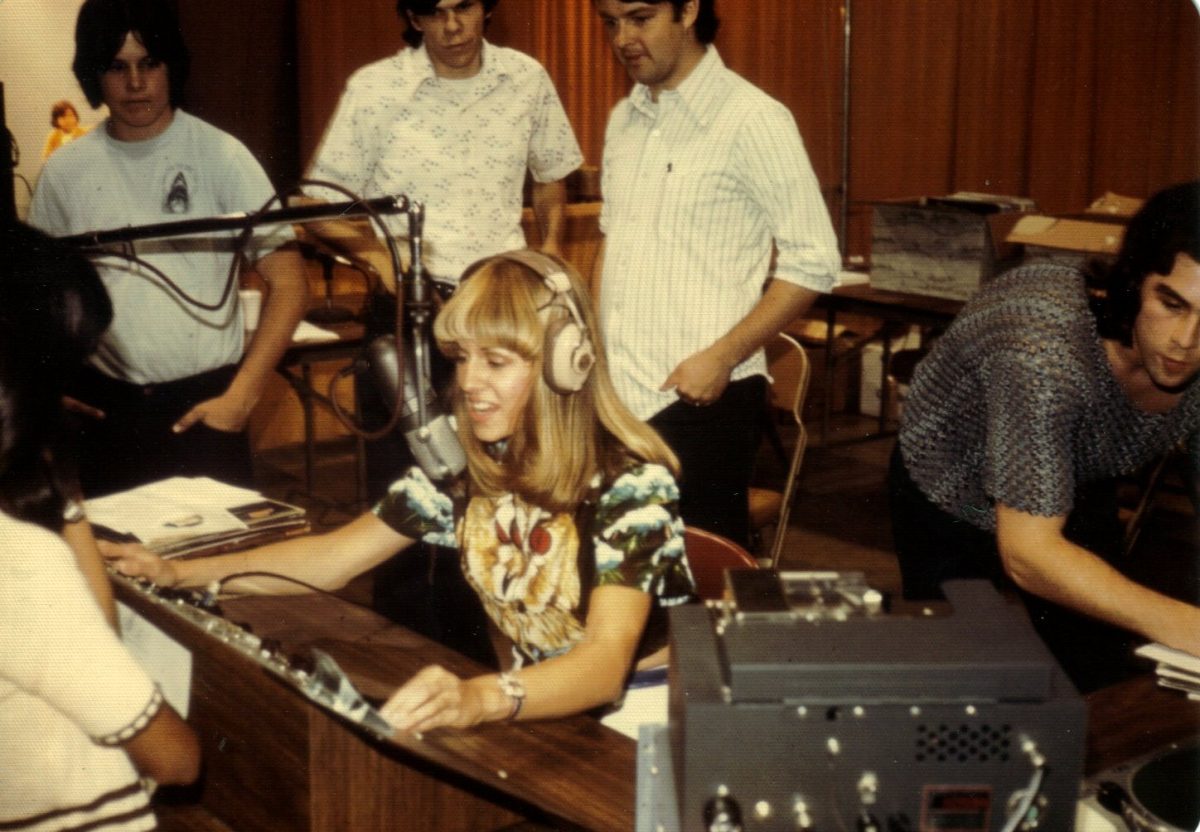

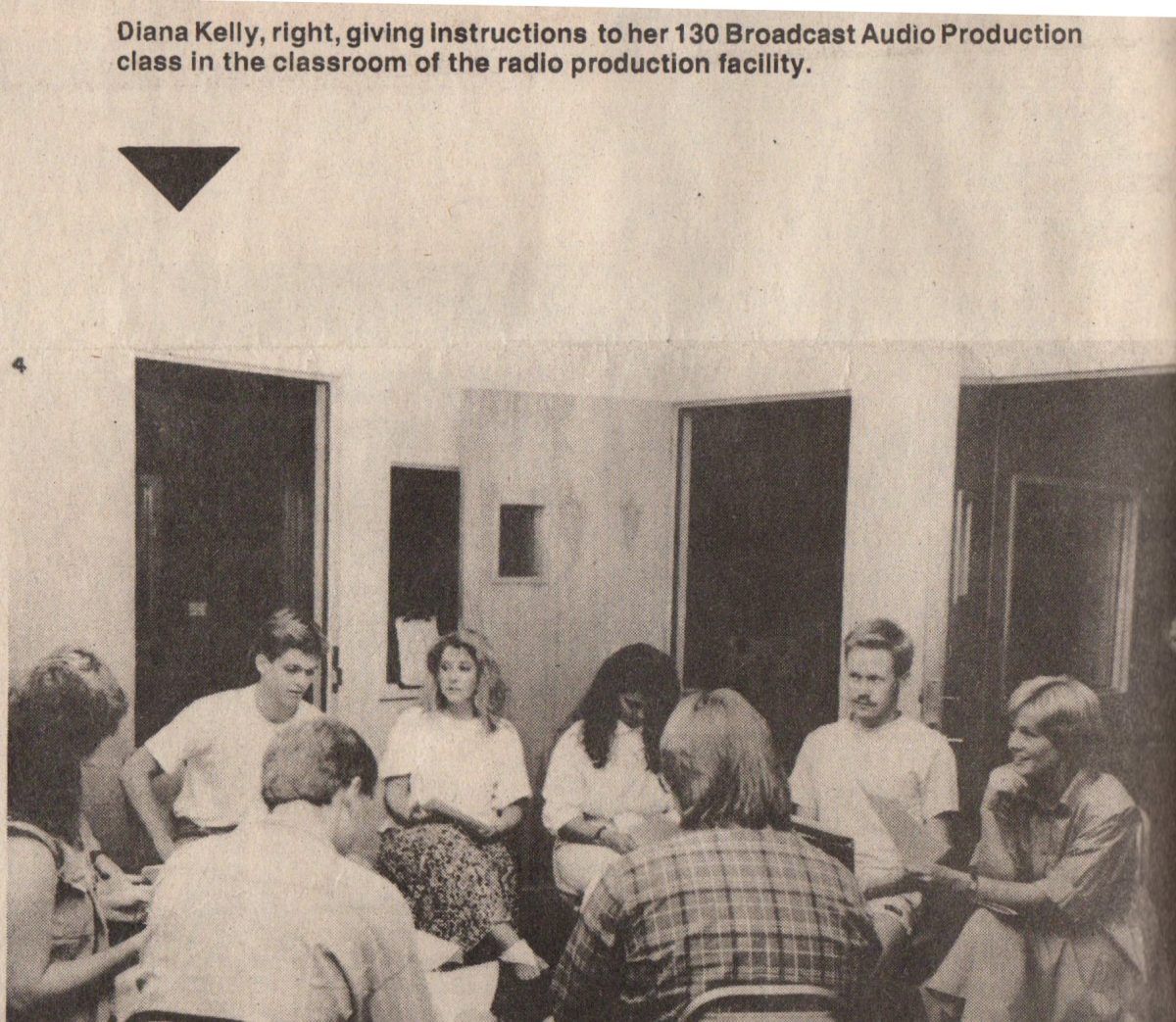
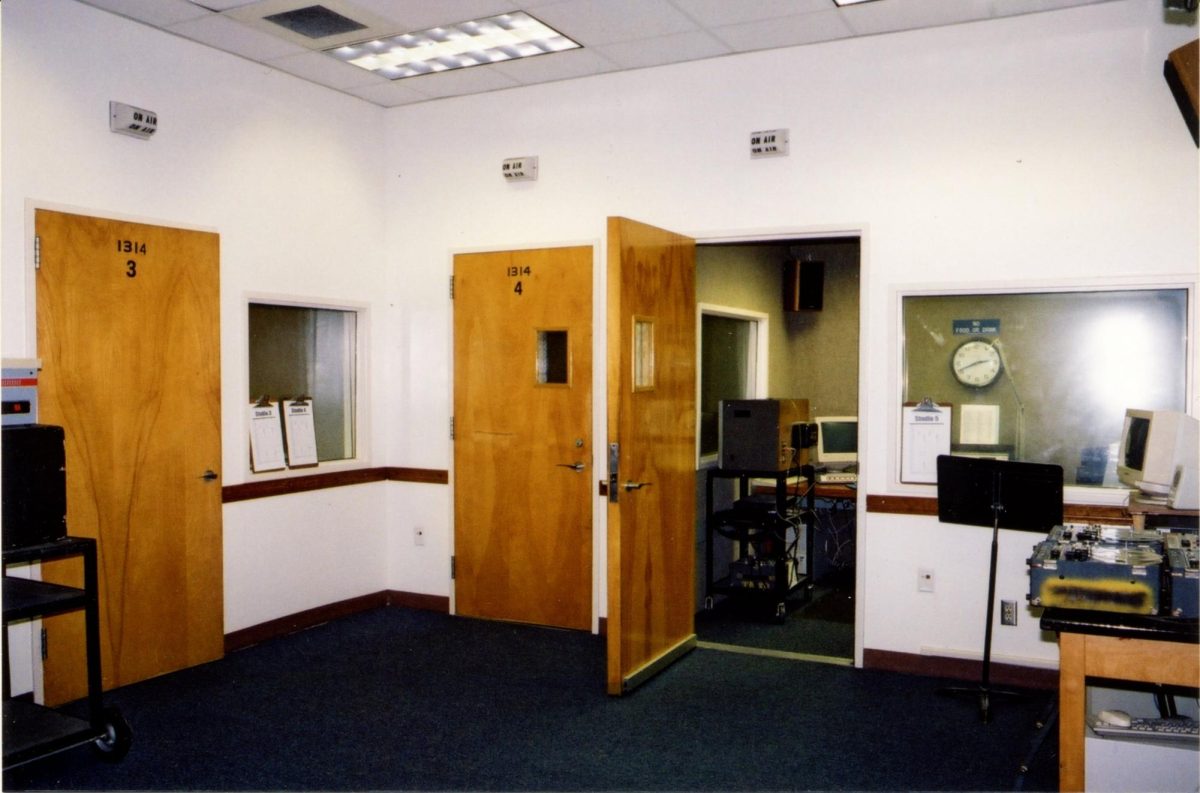
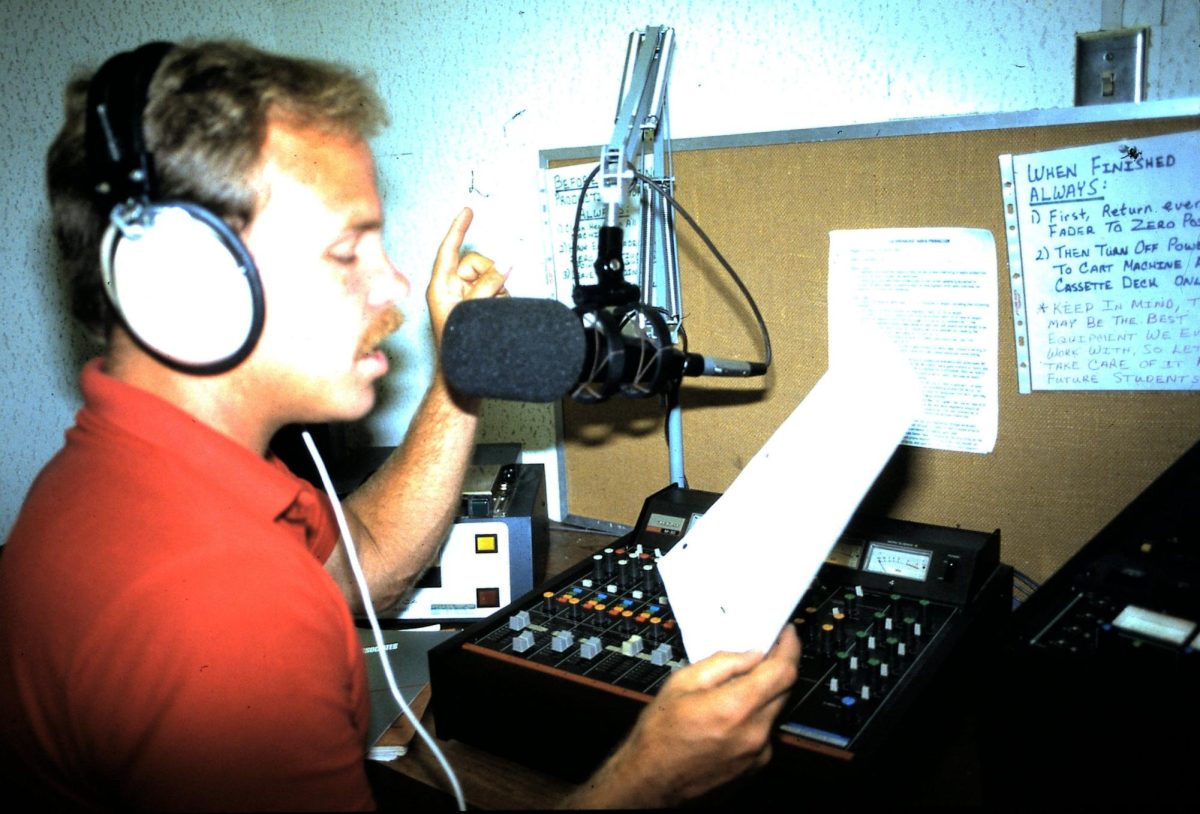
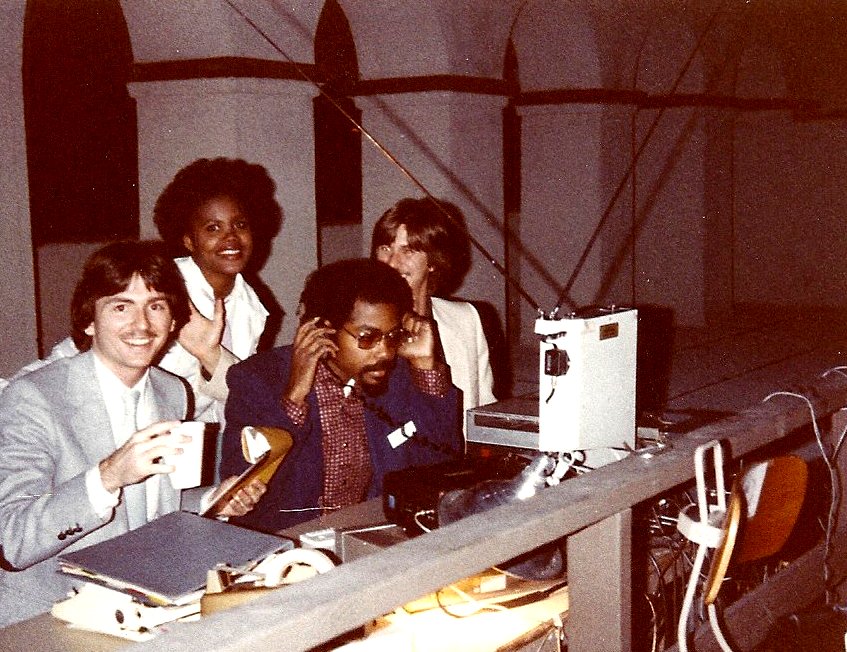
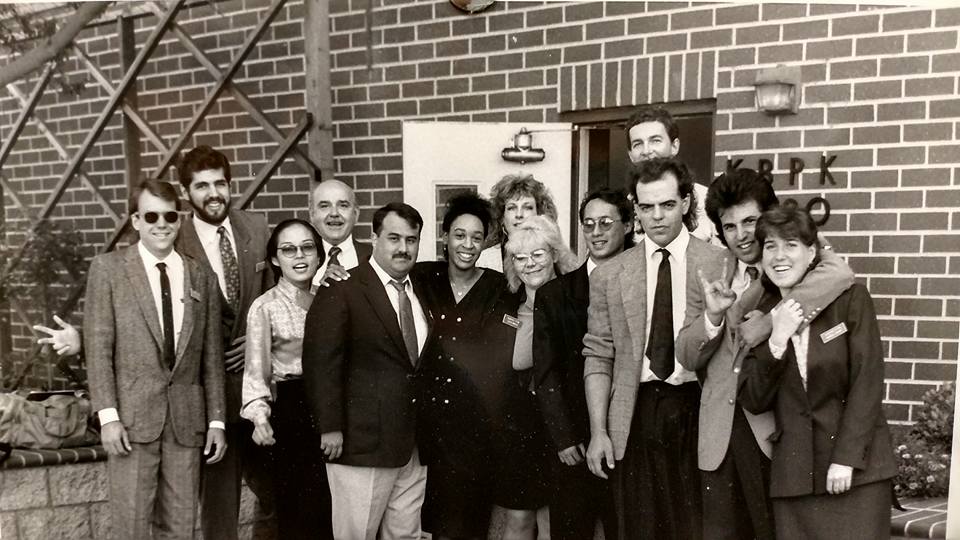
Gregory Picogna • Feb 2, 2024 at 5:01 am
Thank you for for this informative and and memorable article about KBPK’s 50 year anniversary. I especially enjoyed the ‘pre- Fullerton College’ history portion that addressed the station’s origin at Calder Junior High School. I was surprised and grateful for the inclusion of the news article and picture of Jack Townsend, Mark Badenhop and me (Gregory Picogna) working in the station. I remember what a fun and challenging experience it was to obtain the radio operators license (3rd class) and speak ‘live’ on the air. Thank you for this memory!
Jake Rhodes • Feb 2, 2024 at 12:18 pm
Thank you for reaching out and your contributions to KBPK Mr. Picogna! All KBPK content is now found here at The Hornet. -Current Editor-in-Chief of The Hornet, Jake Rhodes